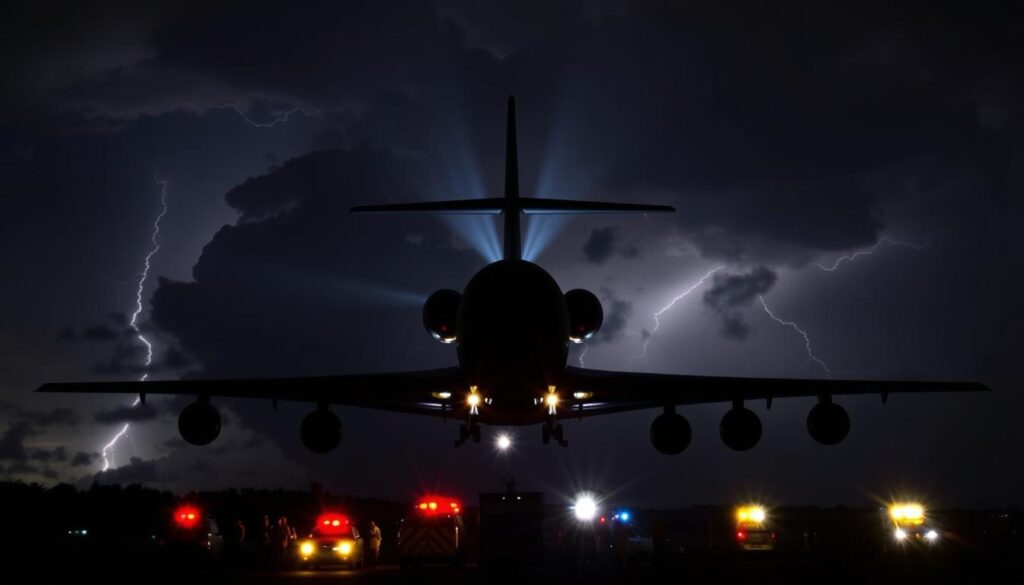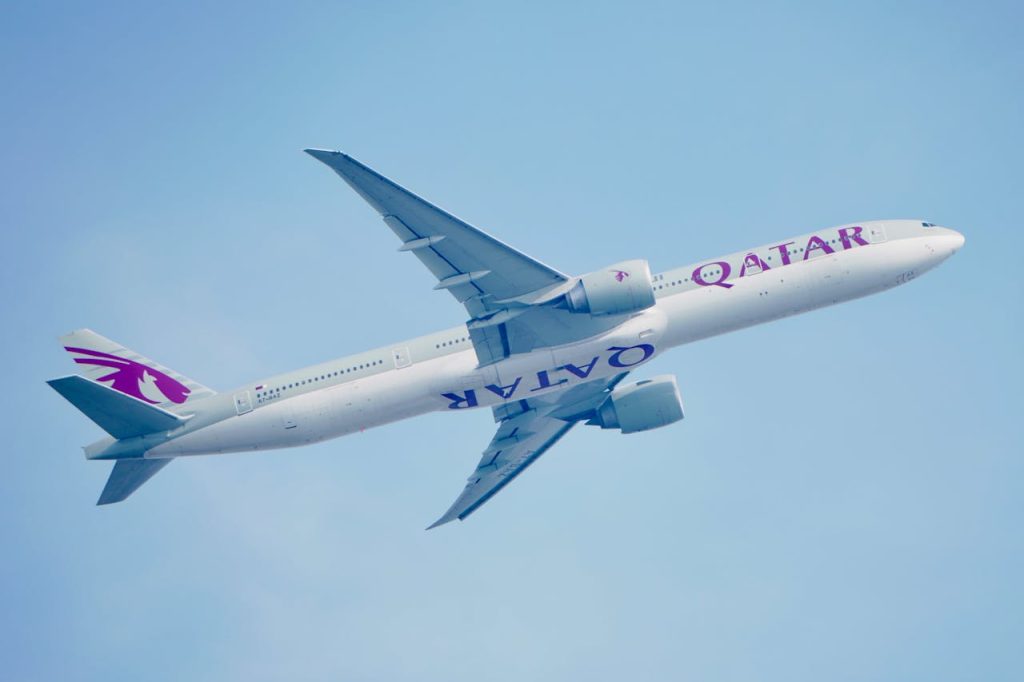The McDonnell Douglas DC-10 was a wide-body tri-jet aircraft that made a big impact on aviation. It was introduced in the early 1970s. It was one of the first wide-body jets to fly commercial, starting a new chapter in air travel.
Despite its groundbreaking design, the DC-10 had to overcome many challenges. It faced a series of tragic accidents that hurt its reputation. We look into the DC-10’s history and its lasting effect on the aviation world.
Key Takeaways
- The McDonnell Douglas DC-10 was a pioneering wide-body tri-jet aircraft.
- It entered service in the early 1970s, marking a new era in commercial aviation.
- The DC-10 faced numerous challenges, including several high-profile accidents.
- Despite its troubled history, the DC-10 remains a significant part of aviation legacy.
- Its impact on modern aircraft design and safety regulations is still felt today.
The Story Behind the MCDONNELL DOUGLAS DC-10
The DC-10 was created to change long-haul flights. The airline industry was key in its making. In the late 1960s, McDonnell Douglas made a tri-jet to meet the growing need for wide-body planes.
The DC-10 took to the skies on August 29, 1970. It was seen as a big step forward in flying. People thought it would make travel better and more efficient.
How the Airline Industry Shaped Its Development
The airline industry’s needs guided the DC-10’s design. Airlines wanted planes that could carry more people comfortably and save money. The DC-10’s wide body and three engines were answers to these needs.
- Increased passenger capacity
- Improved fuel efficiency compared to earlier models
- Enhanced comfort through a wider cabin
For more details on the DC-10’s creation, check out the Wikipedia page on the McDonnell Douglas.
The Engineering Challenges Overcome
Building the DC-10 was tough. One big problem was making sure the plane was strong, with its big body and third engine at the back.
McDonnell Douglas engineers tackled these problems with new designs and lots of testing. Their hard work made an aircraft that went beyond what the aviation industry expected.
How to Understand the DC-10’s Revolutionary Design
The DC-10’s design was a game-changer in commercial aviation. It brought new features that made it a top choice for long-haul flights.
Analyzing the Tri-Jet Configuration
The DC-10’s tri-jet setup was its standout feature. It had three engines: two under the wings and one at the tail. This design combined power and efficiency in a unique way.
Key benefits of the tri-jet design included:
- Increased thrust for better takeoff
- Redundancy for safety in case of engine failure
- Flexibility for various environmental conditions
Examining the Wide-Body Cabin Layout
The DC-10 had a wide-body cabin for more space and comfort. It could carry over 380 passengers, perfect for busy routes.
The wide-body design allowed for different cabin layouts. Airlines could choose how to arrange the seats for different classes and needs.
| Cabin Configuration | Typical Seating Capacity | Advantages |
|---|---|---|
| All Economy | 380+ | High-density seating for maximum revenue |
| Mixed Class | 250-300 | Offers a balance between passenger comfort and revenue |
| Luxury Configuration | 200-250 | Provides premium service for high-end passengers |
Identifying Key Technical Innovations
The DC-10 was packed with technical innovations. It used advanced materials and manufacturing to cut weight and boost fuel efficiency.
It also had cutting-edge avionics and flight systems. These improved its performance and safety.
Some of the notable technical innovations included:
- Advanced engine designs for better fuel efficiency
- Use of composite materials for reduced weight
- Sophisticated autopilot and navigation systems
Distinguishing the DC-10 from Other Commercial Aircraft
The MCDONNELL DOUGLAS DC-10 was a wide-body tri-jet that made its mark in aviation history. It had a unique design and capabilities. We will look at what made the DC-10 stand out and compare it with its competitors.
Recognizing External Features and Characteristics
The DC-10 had a tri-jet configuration, with one engine under each wing and the third at the base of the vertical stabilizer. This made it look different. The tri-jet design gave the DC-10 the power needed for long flights and became a key feature. It also had a wide-body cabin, making the flight experience better for passengers.
Comparing with Boeing and Airbus Competitors
The DC-10 competed with Boeing’s 747, known as the ‘Queen of the Skies’. Both were designed for long-haul travel. The Boeing 747 had four engines, while the DC-10 had three. The DC-10 could take off from shorter runways, giving it an edge. It was also ahead of Airbus competitors when they entered the market.
The DC-10’s design and flexibility made it unique. It was more than just another plane; it showed the innovative spirit of its time. It offered airlines a reliable choice for long flights.
Decoding the MCDONNELL DOUGLAS DC-10 Specifications
Understanding the DC-10’s specs is key to seeing its impact on the airline world. Its design and features made it a top pick for airlines in the 1970s and 1980s.
Measuring Range and Payload Capabilities
The DC-10 was built for long flights and heavy loads. It could carry a lot of weight over long distances. This made it great for both short and long trips.
Understanding Engine Options and Performance
The DC-10 had engines from General Electric and others. The engine choice affected its speed, range, and fuel use.
Evaluating Operating Economics for Airlines
The DC-10’s operating costs were important for airlines. Costs like fuel, maintenance, and crew needs were key. These costs helped decide if the plane was worth it.
| Specification | DC-10-10 | DC-10-30 |
|---|---|---|
| Maximum Takeoff Weight (kg) | 195,000 | 259,000 |
| Range (km) | 6,115 | 9,600 |
| Engine Options | GE CF6-6D | GE CF6-50C |
| Payload Capacity (kg) | 40,000 | 45,000 |
The table shows key differences between the DC-10-10 and DC-10-30. It highlights their differences in weight, range, engines, and payload.
Exploring the Evolution of the DC-10 Series
The DC-10 evolved into different models, each for specific needs. This was key in the changing world of commercial aviation in the 1970s and 1980s.
The DC-10-10: Domestic Operations
The DC-10-10 was made for flying within the U.S. It had General Electric CF6 engines and a shorter range. American Airlines was the first to use it for busy domestic flights.
The DC-10-30: Intercontinental Service
The DC-10-30 was a big step up, with more fuel and powerful engines. It was great for long flights. Airlines like Lufthansa and British Caledonian chose it for international flights.
The DC-10-40: Enhanced Performance Model
The DC-10-40, also known as the KC-10A, had even better performance. It had Pratt & Whitney JT9D engines. Northwest Airlines liked it for long flights across the Pacific.
Military and Special Purpose Adaptations
The DC-10 was also used for military and special tasks. The KC-10 Extender was key for refueling in the air. There was also a DC-10 Airborne Command Post, showing its wide range of uses.
The DC-10’s evolution shows its big impact on aviation history. It went from U.S. flights to global ones and even military use. Its design influence still shows in today’s wide-body planes.
Understanding the DC-10’s Controversial Safety History
The DC-10 had a promising start but faced many safety concerns. It became known as the “Death Chamber” due to several accidents. These incidents questioned its safety and reliability.

Analyzing the Early Technical Challenges
The DC-10 had several early technical issues. One major problem was the cargo door, which could malfunction if not closed right. This was seen in the 1974 crash of Turkish Airlines Flight 981.
The crash showed design flaws and poor safety steps. So, changes were made to the cargo door to avoid future problems.
Learning from Design Improvements and Modifications
MCDONNELL DOUGLAS made many safety upgrades for the DC-10. These included:
- Enhancements to the cargo door locking mechanism
- Improved hydraulic system design to reduce the risk of failure
- Advanced materials and construction techniques to enhance durability
These changes made the DC-10 safer and helped improve aviation safety standards.
Putting the Safety Record in Historical Context
The DC-10’s safety record was concerning, but we must look at it historically. The 1970s saw more air travel and incidents. But the DC-10’s issues were more severe because of its size and high-profile use.
Aviation historian John Smith said, “The DC-10’s safety challenges were not just its problem. They showed the broader challenges of the growing aviation industry.”
In summary, the DC-10’s safety history taught the industry valuable lessons. By understanding its early issues, improvements, and historical context, we see the complexity of making safe commercial planes.
Assessing the DC-10’s Impact on Passenger Air Travel
The DC-10 was a game-changer in the world of commercial aircraft. It was a wide-body jet that brought big changes to long-haul flying.
How It Transformed Long-Haul Flying Experience
The DC-10 was made for comfort and efficiency on long flights. Its wide-body cabin could carry more people and cargo. This made it a hit with airlines.
It changed how airlines flew long distances. They could offer more direct flights and cut down travel times. This was thanks to the DC-10’s ability to carry a lot of weight.
Airlines also started to improve in-flight services. They added movie screens and meal services to make flying better for passengers.
Tracing Its Influence on Future Aircraft Design
The DC-10’s design and features shaped future planes. Its tri-jet configuration and wide-body design were key. Boeing and Airbus took these ideas and made them better.
Measuring Economic Impact on the Airline Industry
The DC-10 was a big deal for airlines. It was fuel efficient and could carry lots of people. This made it great for long-haul flights.
It was also good for carrying cargo. This made it even more valuable to airlines. The DC-10’s impact is still felt today in the airline industry.
Discovering the DC-10’s Presence Today
The DC-10’s legacy lives on through its successor and preserved aircraft. It’s no longer in commercial service, but its impact is still felt in aviation.
Remaining Operational Aircraft
Though retired from commercial use, some DC-10s still fly. Many have been converted for cargo work. Others help with military aerial refueling.

The MD-11: Successor to the DC-11
The McDonnell Douglas MD-11 is the DC-10’s successor. This tri-jet wide-body airliner carried on McDonnell Douglas’s legacy. It faced challenges but marked a step forward in design and tech.
- Improved fuel efficiency
- Advanced avionics systems
- Enhanced passenger comfort
Preserved Examples in Museums
Several museums worldwide have DC-10s on display. These museums give us a close look at aviation history. They show the DC-10 in different setups.
| Museum | Location | Exhibit Details |
|---|---|---|
| National Air and Space Museum | Washington D.C., USA | DC-10 cockpit and cabin section |
| Aviation Museum | Paris, France | Full-scale DC-10 model |
Visiting these museums lets us see the DC-10’s importance in aviation history. It shows its lasting impact.
Conclusion: Appreciating the Legacy of a Pioneering Wide-Body Jet
The MCDONNELL DOUGLAS DC-10 was a pioneering aircraft that faced many challenges. It was involved in several tragic accidents. Yet, its impact on aviation history is clear, teaching us about the need for safety and innovation.
As a wide-body jet, the DC-10 greatly influenced commercial aviation. It changed how passengers travel and how planes are designed. Its legacy still shapes the aviation industry today, with lessons from its development helping to improve modern aircraft.
By understanding the DC-10’s achievements and challenges, we gain valuable insights. These insights help us make air travel safer and better for the future.


